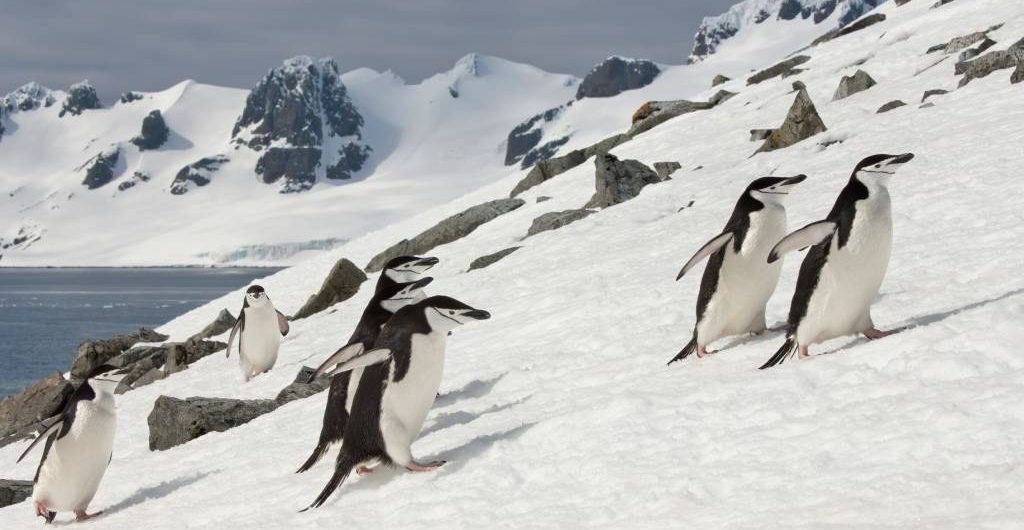
Snow Hill Island is a remote and pristine island situated in Antarctica, one of the most unspoiled and inhospitable regions on Earth. It is known for its stunning natural beauty, unique wildlife, and a rich history of scientific exploration. This island is a captivating destination for adventurers, researchers, and nature enthusiasts, offering a glimpse into the remarkable wonders of the Antarctic continent.
Location and Geography
Snow Hill Island is located in the eastern part of the Antarctic Peninsula, within the Weddell Sea. It is part of the Antarctic region, which is characterized by vast ice sheets, frigid temperatures, and extreme isolation. The island’s geography is dominated by rugged mountain ranges, ice formations, and expansive glaciers, making it a challenging yet rewarding destination for those who dare to venture here.
Importance and Significance Snow Hill Island holds immense importance in the field of scientific research. It is home to a diverse range of wildlife, including several penguin species and seals, making it an invaluable site for ecological studies. Additionally, its remote location provides an opportunity to understand the impacts of climate change on the fragile Antarctic ecosystem.
History
Discovery and Exploration Snow Hill Island was first discovered in the early 19th century by explorers and seal hunters. It gained prominence during the heroic age of Antarctic exploration in the late 19th and early 20th centuries when notable expeditions, including those led by Ernest Shackleton and Otto Nordenskjöld, explored and conducted research on the island.
Early Inhabitants While Snow Hill Island has never been permanently inhabited, it served as a temporary base for early explorers and scientific expeditions. These brave individuals endured harsh conditions to further our understanding of Antarctica’s unique environment.
Historical Events and Milestones The island witnessed several historic events, such as the first confirmed landing of humans on the Antarctic continent by the Swedish Antarctic Expedition led by Nordenskjöld in 1902. These events are testament to the determination and courage of early polar explorers.
Geography and Climate
Terrain and Landscape Snow Hill Island’s terrain is characterized by steep mountains, ice cliffs, and expansive glaciers. It is part of the Antarctic Peninsula, which is experiencing rapid changes due to global warming, making it an important location for climate research.
Climate and Weather Patterns The island experiences extreme cold throughout the year, with temperatures often plunging far below freezing. Its climate is influenced by the surrounding Weddell Sea and the presence of the Antarctic ice sheet, creating challenging conditions for both wildlife and explorers.
Wildlife and Ecosystem Despite its harsh climate, Snow Hill Island is home to a variety of wildlife, including Adélie penguins, emperor penguins, and Weddell seals. These species have adapted to survive in this unforgiving environment and form a crucial part of the Antarctic ecosystem.
Research and Scientific Studies
Scientific Expeditions Snow Hill Island has been a focal point for numerous scientific expeditions over the years. Researchers from around the world have come to study the island’s wildlife, geology, and climate to gain insights into the impacts of climate change and the preservation of this unique ecosystem.
Notable Research Findings Research conducted on Snow Hill Island has contributed to our understanding of global climate trends, ice dynamics, and the behavior of Antarctic wildlife. These findings have far-reaching implications for our planet’s future.
Contributions to Science and Conservation The data collected on Snow Hill Island plays a critical role in ongoing conservation efforts to protect Antarctica and its inhabitants. It serves as a barometer for understanding the effects of climate change and the importance of preserving this pristine environment.
Tourism and Recreation
Tourism Activities While Snow Hill Island is primarily a destination for scientists and researchers, it has also attracted a limited number of adventurous tourists. Activities include wildlife viewing, ice trekking, and experiencing the unparalleled beauty of the Antarctic landscape.
Visitor Attractions The island’s main attractions are its stunning ice formations, unique wildlife colonies, and the opportunity to witness some of the planet’s most remote and untouched landscapes.
Sustainable Tourism Practices Efforts are made to ensure that tourism on Snow Hill Island is conducted in an environmentally responsible and sustainable manner. Strict regulations are in place to minimize the impact on the fragile ecosystem.
Challenges and Conservation Efforts
Environmental Threats The most significant threat facing Snow Hill Island and the entire Antarctic region is climate change. Rising temperatures and melting ice are affecting the island’s ecosystem, including the penguin and seal populations that rely on sea ice.
Conservation Initiatives International organizations and governments are actively engaged in conservation efforts to protect Snow Hill Island and the broader Antarctic environment. These initiatives include establishing marine protected areas and reducing greenhouse gas emissions.
Protection of Wildlife and Habitat Efforts are also directed towards safeguarding the island’s unique wildlife and their habitats, ensuring that future generations can continue to study and appreciate the wonders of Snow Hill Island.
Future Outlook
Potential Developments The future of Snow Hill Island remains closely tied to global efforts to combat climate change. It is imperative that conservation measures continue to evolve to protect this fragile ecosystem.
Research Opportunities As technology advances, so do the research opportunities on Snow Hill Island. Innovative studies in areas such as glaciology, marine biology, and climate science hold promise for unlocking new insights into the Antarctic environment.
Conservation Goals The primary goal for Snow Hill Island and Antarctica as a whole is to preserve its pristine nature and unique biodiversity. International cooperation is essential to achieving this aim.